Motorcycle Road Trip: Romania to Bulgaria to Armenia to Georgia, and back | TA Diary, tips & Hidden Gems

Epic road trip ride from Bucharest, RO, through Bulgaria onto north Turkiye, into Armenia, then Georgia. This post is a comprehensive planning guide and trip diary for such a motorbike trip, including a packing list, POIs, and contact details needed for the trip.
Part 1/ Pre-trip research on where to visit
Must-see places to visit in Georgia
Scenic Roads & Mountain Passes
- Abano Pass (2,826m) – Highest drivable pass in Georgia, access to Tusheti,
- Goderdzi Pass – Between Khulo and Adigeni, forested gravel pass,
- Zekari Pass – Connects Sairme and Baghdati, mild off-road, beautiful nature,
- Datvisjvari Pass – On the road to Shatili, remote and wild,
- Sno Valley to Juta – Scenic detour from Kazbegi into alpine zone,
- Paravani Lake Loop – Open plains and gravel tracks,
- Pankisi Gorge – Remote road through Chechen villages,
Regions & Villages
- Tusheti National Park – Accessible via Abano Pass, Omalo and Dartlo,
- Kazbegi / Stepantsminda – Home to Gergeti Church, Mt. Kazbek,
- Ushguli (Svaneti) – Europe's Centre inhabited village, with rough access,
- Racha Region (Oni, Ambrolauri) – Alpine scenery, wine, low tourist flow,
- Shatili / Khevsureti – Medieval towers, a remote valley,
- Beshumi / Adjara Mountains – Via Goderdzi Pass, green and remote,
Cities & Culture
- Tbilisi – Old town, nightlife, sulfur baths,
- Kutaisi – Caves and monasteries, relaxed vibe,
- Batumi – Black Sea city, modern skyline, beach,
- Telavi – Centre of the Kakheti wine region,
Natural Attractions
- Vardzia – Ancient cave monastery in the cliffs,
- Martvili Canyon – Turquoise waters and waterfalls,
- Prometheus Cave – Stunning underground formations,
- David Gareja Monastery – Semi-desert caves on the border,
- Dashbashi Canyon – Glass bridge and canyon walk,
Other Musts
- Georgian Military Highway – Scenic paved road to Russia,
- Ananuri Fortress – a Historic site on the way to Kazbegi,
- Russia–Georgia Friendship Monument – Panoramic viewpoint,
- Wine tasting in Sighnaghi / Kakheti – Traditional Georgian wines,
- Stay in Svan or Khevsur tower guesthouses – Authentic stone homes
Must-see places to visit in Armenia
Scenic Roads & Mountain Passes
- Selim Pass (2,410m) – Historic caravanserai and breathtaking views on the way to Lake Sevan
- Vardenyats Pass (Selim Pass alternative) – Rugged high mountain pass with stunning alpine scenery
- Jermuk to Goris Road – Winding route through deep canyons and forests, waterfalls nearby
- Tatev Wings Road – Road to the famous Tatev Monastery, steep and scenic with twisty sections
- Mount Aragats Loop – Circles the highest peak in Armenia, volcanic landscapes and alpine lakes
Regions & Villages
- Tatev / Syunik Region – Medieval monasteries, the world's longest reversible cable car (Wings of Tatev)
- Dilijan National Park / Armenian Switzerland – Lush forested hills, hiking trails, spa town
- Khndzoresk / Old Village – Cliffside village with swinging bridge and caves
- Lake Sevan – The Largest lake in the Caucasus, beach resorts, monasteries on peninsulas
- Garni & Geghard – Pagan temple and UNESCO-listed monastery carved into rock
- Noravank – Red rock canyon with stunning medieval monasteries
Cities & Culture
- Yerevan – Capital city, Republic Square, museums, vibrant café culture
- Gyumri – Armenia's second city, traditional architecture, artsy vibe
- Etchmiadzin – Spiritual center of Armenian Apostolic Church, ancient cathedral
Natural Attractions
- Garni Gorge (Symphony of Stones) – Basalt column formations, hiking paths
- Shaki Waterfall – Beautiful waterfall near Gyumri
- Debed Canyon – Deep canyon with monasteries perched on cliffs
- Mount Ararat Viewpoints – Iconic peak visible from many spots in Armenia
Other Musts
- Tasting Armenian brandy in Yerevan – Visit the Ararat Brandy Factory
- Stay in a guesthouse in Dilijan or Tatev – Experience rural hospitality
- Visit local markets and try Armenian lavash and khorovats (BBQ)
- Hiking in the Armenian Highlands – Trails around Aragats and Syunik region
Boat service, Bulgaria - Georgia
Although there are 2 options from Bulgaria to Georgia, from everything I've read, this blog article accurately covers the seemingly horrible process of taking a boat across the Black Sea. In the end, I didn't use this service and rode both directions — 9300km in total.
Part 2/ Packing list
For a single rider, for a 3-4 week motorbike road trip, minimalist but complete kit list, with camping and mild off-roading in Georgia and Armenia, suitable for big adventure bikes. Balanced for weight, durability, and self-sufficiency.
Packing List
Documents & Essentials
- Passport + copies (also emailed to self)
- Driver's license + IDP (also emailed to self)
- Motorcycle insurance + Green Card or local (also emailed to self)
- Bike registration + spare key (also emailed to self)
- Cash (GEL & AMD), debit/credit card
- Local SIM or eSIM with data
- Offline maps (Osmand / Gaia / Maps.me / Google Maps)
- Emergency contacts list (also emailed to self)
Riding Gear
- ADV helmet with peak & visor
- Armoured jacket (ventilated with waterproof liner or shell)
- Armoured riding pants
- Base layers (merino or synthetic, 2-3 sets)
- Neck buff/balaclava
- Waterproof gloves + light gloves
- Waterproof boots (ADV or enduro-style)
- Rain gear (if not integrated)
- A hydration pack or bottle, easy to access
Camping Gear
- 3-season tent (freestanding if possible)
- Compact sleeping bag (0°C comfort)
- Sleeping pad (insulated, packable)
- Lightweight pillow or inflatable
- Camping stove (gas or alcohol type)
- Pot/pan + spork + mug
- Lighter + waterproof matches
- Water filter (Sawyer Mini / Grayl / tablets)
- Headlamp + spare batteries
- Mini solar panel, Power bank + cables
- Rope or paracord (drying line, tent repair)
- Folding knife or multitool
- Small dry bags or stuff sacks (gear separation)
- Small camp towel
- Collapsible water container or spare bottles
Clothing (layered, modular)
- 3x moisture-wicking shirts
- 1x long-sleeve shirt
- 1x light fleece or mid-layer
- 1x windbreaker or insulated jacket
- 1x packable rain jacket (if not using your riding shell)
- 2x riding socks (merino recommended)
- 1x thermal leggings
- 1x shorts
- 1x pants (lightweight, synthetic)
- 3x underwear
- Flip-flops or camp shoes
- Hat/cap + sunglasses
Motorcycle & Maintenance
- Tyre repair kit (plugs or tubes, depending on your setup)
- Compact air compressor or mini hand pump
- Chain lube (small bottle)
- Tool roll (with essentials for your specific bike)
- Spare fuses, zip ties, duct tape
- Spare inner tube (if tubed tyres) or patch kit
- Oil for top-up (small bottle)
- Bungee cords or Rok straps
- Soft luggage or panniers + waterproof liner/dry bags
- Small bike cover or tarp (optional)
- GPS / phone mount
- Kickstand plate (for soft ground)
Personal / Health
- Travel first aid kit (include meds for diarrhoea, pain, altitude, etc.)
- Sunscreen + lip balm
- Toothbrush + paste + biodegradable soap
- Nail clippers, small comb, etc.
- Toilet paper or wipes
- Bug spray
- Earplugs
- Compact mirror (also useful for trail fixes)
Part 3/ Trip Travel diary
Day 1, May 15 – Bucharest to Burgas
On a hot sunny May 15th, I set out from Bucharest, planning to avoid highways and embracing the scenic roads winding through Romania's countryside, heading for Burgas, Bulgaria for my first overnight.
It's always stressful when starting a big tour as you keep remembering little things you need to prepare, but eventually, I set off in the late morning heat of Bucharest, overdressed with all the protective gear. The panniers on the bike made it unusually wide & it was a stress to avoid catching car door mirrors as I weaved through the congested capital.
Eventually, I crossed the eastern part of the ring road and into the quieter country roads heading for Calarasi, and the Danube river crossing, accompanied by the rhythmic hum of the Africa Twin'2 parallel twin engine. Until now, I had plenty of concerns that the bike was too big for some of the extreme roads I had planned on my route to Armenia & Georgia, but I was willing to take the risk. The journey took me along the Danube River, onto a ferry to cross into Bulgaria, a welcome pause in the heat of the day, watching the slow-moving river and the backdrop of hills on either side painting a tranquil picture. Once in Bulgaria, the road continued through quiet and deserted villages, which is always a sad reminder of what happens to less progressive countries when their youth leave for reasons of prosperity, or lack thereof.
As darkness fell, I arrived at the coastline north of Burgas and followed a superb twisty road for maybe 20km down towards the coastal holiday city of Burgas as the sun set. The occasional pop of colour from blooming flowers brightened the roadside as I rolled into Burgas, the old city centre welcoming me with its laid-back charm and its many street cafés bustling with clients. Narrow streets, rustic buildings, plenty of renovations underway, road works and various infrastructure improvements were visible, and the salty scent of the Black Sea blend marked the end of my ride for the first day. As the sun vanished from view, the peaceful vibe of Burgas, with its cafes and seaside views, felt like a well-deserved spot to explore after a day of back-road riding, 420km of adventure.
Day 2+3, May 16 – Burgas to Istanbul
After a quick breakfast, the morning greeted me with an overcast sky and the promise of adventure as I left Burgas and headed toward the lush wilderness of Strandzha National Park, a vast stretch of unspoiled land with dense forests and rugged terrain. The road quickly turns into a long, challenging stretch of unmade tracks—gravely, muddy, slick, and dotted with potholes and puddles after overnight rain. It was slow going, with a laden motorbike kicking up mud as I navigated the winding, uneven path. The air smelled of damp earth and pine> I think I saw 2, maybe 3 cars on the entire 40km track of a future road through the park.
Once out of the reserve, I passed through remote villages on my way to the Turkish border, their once-bustling streets now eerily silent, occupied only by old men, it seems to me, with abandoned buildings standing like ghosts of a former life. It's a strange feeling, the solitude, but also strangely peaceful, as if time has slowed down here. The rain comes and goes, a soft drizzle at times, making the tracks even slipperier, but the motorbike handled it well, and the Continental TKC tyre,s as always, did an impressive job even with a total load over 400kg. The challenge of staying upright only added to the adventure. No time to get lonely or bored, as your greatest fear is dropping the bike in a remote area and having no choice but to lift it alone.
As the day stretched on, I crossed into Turkey, where the landscape changes, becoming more rolling and open, the forests giving way to fields. I finally make my way to the vast metropolis that is Istanbul, heading for Hotel Montenegro. Nothing can prepare you for Istanbul traffic on a Friday night, a city with 16 million people, seemingly all on the roads at once heading home. 10 lane highways gridlocked with thousands of motorbikes moving at incredibly dangerous speeds in and out of traffic as if they were racing from a hurricane. Despite the chaos and stress of 8 pm rush-hour traffic, other commuters still found time to wave hello (unless they were cursing me?). One driver pulled alongside me at a traffic light to ask my destination before bidding me a warm welcome to Istanbul.. An impressive race of people, the Turks. The city buzzed with its usual energy, but the quiet hotel, with its cosy vibe and proximity to the Bosphorus, was a welcome retreat. After a long, muddy day, I washed my boots in the shower, and nylon Honda tee-shirt, set it to dry, showered, and then crashed out—no chance of finding a cool beer anytime soon, as the majority of Turks are strict Muslims.
The next day, I used Chat GPT to highlight the best areas of the city to get a good sense of the Asian side of Istanbul, since I had not seen that aspect on my previous 2 visits. I wasn't disappointed.
Kadikoy - Lively neighbourhood with markets, bars, street art, and ferry access; home to the famous Moda district and waterfront promenade.
Uskudar - Historic area with mosques, traditional Ottoman architecture, and the Maiden's Tower views along the Bosphorus.
Cengelkoy - Village feel with wooden Ottoman houses, waterfront cafés, and scenic Bosphorus views.
Beylerbeyi - Known for the elegant Beylerbeyi Palace, picturesque streets, and peaceful vibe near the Bosphorus Bridge.
Kuzguncuk - Artsy, bohemian neighbourhood with colourful houses, galleries, synagogues, and cosy bakeries
Later that evening I toured much of the Asian side of Istanbul as well as the eastern part of the European side, covering maybe 100-150 km that day. The traffic was no different to Friday night, even up to midnight, with 8 lane highways completely full of slow moving traffic. From what I could see, the city never slows down. Despite the massive amount of human activity, the city feels peaceful and friendly, but I was glad to get to bed for some well-earned rest.
Day 4, May 18 - Istanbul to Bolu
Woke up early in Istanbul, packed the bike in heavy rain while the city dozed under a grey Sunday sky. Slipped out across the Bosphorus via the tunnel for the final time this trip, feeling both relieved and excited to leave the vast urban sprawl behind.
Took the backroads northeast to Şile, following narrow lanes through pine woods and rolling farmland. The traffic was light, the air clean if wet, and the Honda purred along, happy to be stretching its legs properly after days of stop-start. In Şile, I grabbed a tea overlooking the coast, locals out for a slow Sunday, fishermen already back with buckets.
From there, I threaded inland, riding twisty backroads through forest villages and tea gardens, slowly making my way southeast toward Sakarya. No highways used, as per the trip plan— just minor roads, farm tracks, and the occasional rough patch where asphalt gave up. It was slow, deliberate riding — the kind that makes you grateful for good suspension.
After Sakarya, I headed deeper into the hills, passing isolated farmsteads and cutting through quiet valleys and eventually through Abant Lake Nature Park en route to Bolu. Some gravel, some potholes, even a short trail detour after a roadblock and plenty of fast serpentines to keep the adrenaline up. Nothing the Africa Twin couldn't handle, a genuinely astonishing piece of kit and the reason it's such a popular bike worldwide for just about every kind of purpose, all in one, which is rare in motorbikes as they usually have a limited range of uses. On a trip like this, you need to remain wide awake, as it's completely normal to see cows walking along the roads.
Arrived in Bolu just before golden hour, overheating from all the kit I was wearing, to see the sunset over the mountains and the crisp air. I found a small hotel on the edge of town. Many of the kids playing in the neighbouring housing estate waved at the sight of my vividly coloured bike, something I suppose they don't see a lot of in that part of the city. — simple, quiet, with room for the bike under a tree. A quick rinse, a hot meal, and the sound of forest insects outside my window.
This was the first day that really felt like the trip I'd imagined. Free from the city, riding slow roads through real places that few would ever see.
Day 5, May 19 – Bolu to Amasra
The Next day, I ventured up into Yedigöller National Park (Seven Lakes National Park) and actually got the bike stuck in mud tracks meant for forestry trucks. Getting yourself out of such a mess as a solo traveller is seriously character-building, since you are 15-20km from civilisation, so no chance of walking off for help. Somehow, I managed to get my way out and really put the impressive tyres to the test of their existence.
After returning to normal roads, I came across a family of 5 muslims, 4 girls and a hapless guy with a flat tyre, right before the apex of a nasty hairpin bend, in 30 °C heat. I asked if they needed help, and the guy politely said they were fine, but the younger girl of the 4 said in excellent English, ‘Yes, please, we really need some help'. The poor guy was under peer pressure to get them out of this mess, but had clearly never touched tools in his life, so between us we managed to jack up the car, remove the burst tyre, then fit the spare, which was buried under a lot of luggage. Once we had got the car mobile again, one of the family insisted I accept a bag of home-cooked edibles, various sweets and savouries (she said it was a local tradition to exchange these foods at that time of year) and blessed my onward journey. So far, I was extremely impressed by the Muslim culture and nature, despite a seemingly endless global campaign to paint them as enemies in one form or another.
At the end of that long day in the national park, covered head to tow in mud, I went to a self car wash back in the city of Bolu, and asked if I could jet wash my own bike, because I know it's a pain to wash a bike properly due to the infinitive number of nooks and crannies. The owner refused, sat me down with a hot tea, and proceeded to foam, scrub, jetwash, rinse, re-rinse, hand dry, then lacquer the bike, and the grand total cost was… nothing. Nada. He would not accept any payment and just wished me safe onward travels. Turks are special people.
From here, I returned to the hotel to collect the heavy panniers I had left off the bike for off-roading, loaded up, then made the 200km sprint to Amasra, on the coast. Again, Chat GPT sent me to a very special place, a campsite on a cliff overlooking the black sea a few KM east of the touristy town of Amasra.
The road itself was amazing, a challenging series of switchbacks & serpentine roads with very steep inclines/ declines, including 2000 year 2000-year-old ancient Roman roadside monument carved into the cliff as you reach Amasra.
I arrived at the campsite literally with 2-3 minutes to watch the setting sun over the flatness that is the Black Sea, while looking in the direction of my favourite place, Vama Veche, Romania. Once the sun had set, I pitched my tent in the dusk light, fired up my petrol stove and made myself some noodles & a crappy tasting coffee. Not because I needed refreshment, but because I felt guilty carrying the cooking gear without using it.
Day 6, May 20 – Amasra to Hamsilos Nature Park, Sinop
Again, entirely on backroads, avoiding highways and sticking close to the Black Sea coast. The route wound through fishing villages like Kurucaşile, Cide, and Dobanyurt, with narrow, twisty roads offering constant sea views and dense green forest on the inland side. The stretch from Cide to Inebolu was especially stunning, with dramatic elevation changes and nearly no traffic, while Inebolu itself provided a charming break with its Ottoman architecture and small-town energy. Light rain began around Türkeli and stayed with me to Ayanc?k, where the road ducked in and out of misty pine forest and empty bays. Arriving at Hamsilos just an hour before sunset, I pitched my tent in the quiet of the forest above the fjord-like inlet, with only birdsong and the sound of waves, ending a long, scenic, and soul-refreshing ride along one of Turkey's most beautiful coastlines. After I pitched my tent, a guy from a group of 4 rowdy teenagers having a nearby BBQ brought me over a plate of cooked food! Turks are special people, I am reminded once again. Later, a German lady in a nearby 4x4 all-road vehicle invited me over to drink tea, and I sat till 1 am drinking various alcohol until 1 am. Later that night, my tent, the only one in the park, was surrounded by wild dogs barking at a distant wolf, if my hearing is accurate. Thanks to TikTok, I was able to play the sound of a roaring Lion, amplified with the help of a metal cup, which had the instant effect of sending the dogs as far as they could run! I must remember that trick if I encounter bears in Transylvania.
Day 7, May 21 –Hamsilos to Unye
From Hamsilos Nature Park, I continued east along the Black Sea coast toward Unye, taking the small roads. The stretch between Sinop and Samsun alternated between peaceful seaside villages and inland detours through rolling farmland, with light traffic and wide, open views. I followed the old coastal route, occasionally hopping onto gravel tracks and forest paths to explore hidden beaches and hilltop viewpoints—some unplanned, some found through CaliMoto. The approach to Samsun was busy but manageable, and east of the city, I quickly rejoined the quiet backroads. As I neared Unye, the landscape became more lush and hilly again, with the sea constantly reappearing on the right. I arrived in the late evening at the Ramada Resort, Unye, tucked right on the beach, where I could finally rest properly—a comfortable room, secure parking for the bike, and the sound of waves rolling in just outside the window. It's not every day you can stay in a five-star hotel, especially after 2 nights of camping. I remember the breakfast bar was enormous, withy every imaginable type of food. When I left, one of the staff asked to take my picture for their Instagram page, and sent it also to me, as seen in this blog as the lead photo.
Day 8, Unye to Sebinkarahisar
Leaving Unye, I turned inland toward Şebinkarahisar via the old mountain roads, completely avoiding the main highways. The ride started gently through green valleys and tea-growing villages like Akkuş and Kumru, where the road narrowed and began to climb sharply. From here, the landscape became increasingly wild and dramatic—lush forested slopes gave way to steep cliffs, misty ridges, and winding single-lane tarmac or broken asphalt. Some sections, especially near Korgan and beyond, turned into gravel or poorly maintained mountain roads—a challenge for off-roading on a big ADV bike like mine. I passed remote highland hamlets where curious villagers waved and children ran beside the road. The final approach to Şebinkarahisar was spectacular: high passes, alpine meadows, and views across deep valleys, with snow still lingering in shady spots despite the warm air. It was a long, challenging, but deeply rewarding route—remote, authentic, and with a feeling of true adventure far from any tourist trail.
After arriving in Şebinkarahisar and checking into a small local hotel, Colonia Park Otel, I set out on foot in the early evening for a steep hike from 1200m to 1400m up into the hills that rise rapidly above the town.
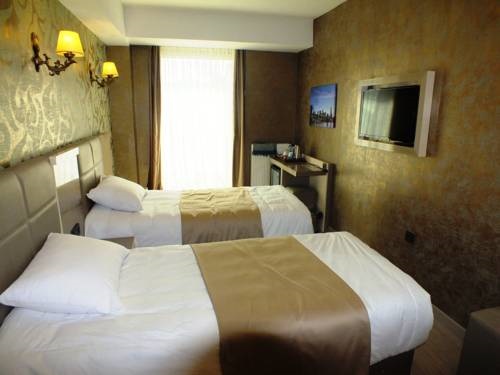
Colonia Park Otel
The elevation here is noticeable—cooler air, the scent of pine, and views stretching across layered ridgelines. The forest itself was dense and quiet, carpeted with needles and moss, broken occasionally by small clearings and rocky outcrops. As the sun began to drop, the light filtered through the trees in golden streaks, and I could see the silhouette of Şebinkarahisar Castle perched dramatically on its crag in the distance. It felt incredibly peaceful and remote—just me, and the call to prayer across the Muslim town carried on the wind through the high mountain forest. A perfect way to wind down after a rugged day of riding.
Day 9, Sebinkarahisar to Bayburt
On May 23, I left Şebinkarahisar early in the morning, heading east toward Bayburt, following Itchy Boots route via remote mountain roads that cut deep into the heart of Eastern Anatolia. The route was stunningly isolated and mostly free of traffic, with long stretches of broken tarmac and loose gravel winding through high passes, alpine meadows, and remote villages untouched by tourism. I passed through Alucra, where the road narrowed and began a slow, steady climb toward the rugged peaks separating Giresun from Erzincan province. The scenery became increasingly dramatic—bare rock faces, snow patches aplenty in shaded areas, and the occasional shepherd tending flocks near icy streams. Normally, I would stop for a swim when the weather was so hot, but these rivers were a little too cold even for me. Beyond Kelkit, the road eased slightly but retained its wild feel, offering fast sweepers through broad, open valleys before the final stretch into Bayburt. Arriving late evening, I rode into the quiet city centre, surrounded by arid hills and flanked by the Çoruh River—dusty, sunbaked, and a world apart from the Black Sea lushness I had left behind. My phone data was barely working, and Booking Com had nothing to offer in this town, so I just rode to the centre and found a simple hotel myself. As tired as I was, I left my motorbike and all its soft luggage, USB cables hanging from the bike, tank bag and all, in front of the hotel. The street was very busy with locals and tourists alike, but no one went even close to the bike. Turkiye is a special place in that regard; safe doesn't come close.
Day 10, Bayburt to Uzongol
From Bayburt to Uzungöl on May 24, I tackled what turned out to be the most gruelling and intense day of riding in my motorcycling life. I took on the infamous D915, known as one of the most dangerous roads in the world, but went further, looping repeatedly up and down its brutal sections and riding the lesser-known parallel mountain tracks that turned out to be just as, if not more, demanding. Fully loaded on the Africa Twin, I faced relentless challenges: endless steep gravel switchbacks that dropped thousands of meters from foggy peaks to rivers below, deep mud traps, sections washed out by rockslides, and terrifyingly narrow ledges with sheer drops and no guardrails. The road demanded full attention—hairpin after hairpin with off-camber gravel, falling debris, and no margin for error. In some spots, I had to stop, scout on foot, then commit to loose descents or awkward climbs that felt barely passable. It wasn't just one pass—it was a whole day of looping mountain terrain, zigzagging through extreme elevations and unmarked forest roads between Bayburt and the Of-Uzungöl road.
Twelve hours later, physically wrecked and mentally exhausted, I finally rolled down into Uzungöl at sunset. The lake shimmered, calm and peaceful, a surreal contrast to the chaos I had just survived. My old friend and soulmate, R, from a past life back in England, always had—and still has—a sharp intuition about me, my safety, and the challenges I face in life. Whenever something unusually sketchy happens, she somehow knows, and she calls. True to form, she felt it this time, too. Even though I'd casually told her in advance the journey I was making, and that it was just a mild off-road route, I privately knew the rumours about D915. At least twice that day, I came dangerously close to not being able to write this diary at all. On the worst of those trails, as I picked my way down an unmapped path from a heavy snow covered mountaintop where an avalanche had blocked the-normally-difficult road down forcing me to make an alternative route or make a massive back track of several hours, to a distant village far below, my mind went totally silent, empty except for one repeating phrase: Not here. Can't die here. Not here. True to form, R called me that night to say she had a bad feeling all day long. As I lay in bed that night, I could hardly believe what that bike had been capable of. Normally, only a smaller enduro should be capable of such trips, but a loaded Africa Twin, I would venture to guess, not many have tried or succeeded.
Day 11 – May 25, Uzungol to Sazlizu, C?ld?r (via Bayburt, Ispir, Yusufeli, Artvin)
May 25th was a punishing but unforgettable ride—475 km of extreme terrain, constant focus, and raw beauty. Leaving Uzungol in the cool morning air, I retraced part of the D915's aftermath, still feeling its bruising toll. From there, I headed toward Bayburt, then veered southeast into the rugged Ispir region—a dramatic stretch of narrow, twisting roads hugging cliffs and running along wild riverbeds. Ispir's raw and remote energy set the tone for the day: sparse settlements, deep canyons, and nothing but the sound of the bike and the wind. From ?spir, I pushed east through Yusufeli—another region under rapid transformation due to dam projects, with tunnels, detours, and freshly cut roads replacing old paths swallowed by rising waters. After hours of relentless riding, I reached Artvin, a city seemingly glued to the mountainside, with an epic road carved into the cliffs and laced with endless tunnels. I stopped for a late lunch there, briefly considering staying overnight. But the clock was ticking—my team was flying into Yerevan in just 36 hours for a team-building retreat, and I wanted to be there ahead of time, rested and ready. So I left Artvin behind and climbed toward the high plateau that leads to Ç?ld?r, riding into near darkness across vast, silent plains. The cold intensified as elevation rose, and when I finally reached Ç?ld?r—a stark, remote place near the Georgian border—I was both shattered and completely alive. This was the longest, hardest ride of the trip, a solitary, gritty push through the forgotten spine of northeastern Turkey. I ended up at a hotel that was the only one available on Booking, 45km east of the town I had targeted, but it was the closest one on the site, so I accepted the 5.6/10 rating as it was already 9 pm, dark and col,d being such a high altitude. As it turned out, the hotel was at least a 9/10, but 2 miserable tourists had left a minimum rating due to petty reasons. The Google reviews are way more accurate than Booking's ratings, but usually in a negative way. This time, it was the reverse, and the hotel was superb.

Lake Cildir Lodge
Day 12 – May 26, Cildir to Yerevan (via Georgia–Armenia border)
The final leg to Yerevan began from Ç?ld?r with the naive hope of a smoother ride, but what followed was a brutal, bone-shaking ordeal. Leaving the calm of Lake Ç?ld?r behind, I crossed into Georgia at Kartsakhi—only to find the so-called road to the Bavra border post in Armenia was barely that. It was nothing but endless potholes, broken gravel, and wheel-swallowing craters, more suited to mountain goats than motorcycles. For over an hour I crawled at walking pace, always sin 1st or 2nd gear for the duration, dodging axle-breaking holes and fighting the handlebars over corrugations and shifting gravel. Once across the Armenian border, the punishment continued, but to a lesser extent, remote, broken roads across high, windblown plateaus that seemed to go on and on. Small villages came and went in silence, no fuel, no signs. Trucks blasted past, spraying dust and stones (once you get dust in your eyes on a motorbike, it's hell to ride), and my concentration was locked on staying upright. It was a mentally and physically draining day. By the time I rolled into Yerevan to the Roma hotel—dust-caked, aching, and hours behind schedule—I felt like I'd aged prematurely. The hotel was a nice surprise, though, a lavish if slightly kitsch affair with a packed mini bar at accessible prices. 4200km or so completed so far since Bucharest and the once-new Continental tyres had maybe another 10-15% life left to give. But I'd made it, just in time to meet my incoming team the next day, with a thousand-yard stare and a bike that had somehow survived it all.
Day 13 – May 27, Yerevan to Lake Sevan (via back roads, two-up)
I spent the day in Yerevan scouting out a motorcycle dealer that could source new tyres before I returned later in the week. After a few dead ends, I located a Honda dealer who understood what I needed and placed an order for a pair of Metzeler Karoo 3s—solid on/off-road tyres ideal for the mixed terrain I'd face heading into Georgia. They were due to arrive in 7 days, just in time for my return to the capital to see the team off. Riding around Yerevan during the day was anything but relaxing—traffic was chaotic, aggressive, and completely unpredictable. Even with over 40 years of experience on motorcycles, I found it genuinely dangerous. At 6 pm, the rest of the team landed—Chris, our ever-reliable guide, led the group in the hire car, along with Andrea, Raluca, Traian, and Valentine. Andra, however, climbed on the back of the CRF1000, and we took a more scenic and adventurous route to Lake Sevan, navigating rough back roads and some mild off-road tracks. The evening light faded as we reached the lake around 9 pm, dusty, exhilarated, and ready for the next stage of the adventure.

The hotel, Louvre Home, Sevan, was a bit of a shock. While the house itself was nicely appointed—modern inside, clean, and well-kept—it was nestled right in the middle of an extremely poor neighbourhood. The surrounding blocks were bleak and run-down, the kind of environment that would intimidate most travellers at first glance. That said, it felt safe enough. The local people were kind and welcoming, and despite the outward appearance of the area, there was a quiet warmth to it. Still, the contrast between the comfort of the accommodation and the setting outside its gates was jarring. andra and I headed into town for a meal as we were ahead of those in the car, but it was nothing to write home about, so we retired to the hotel to meet the others and chat about the coming days.
Day 14 – May 28, Dilijan, Forest Monasteries, Mountain Rains, and a Feast by the Lake
The morning started with a trip to a local brewery and an excellent breakfast. After this we set off to the Dilijan hills —Andra and I on the Africa Twin, the team close behind in the trusty 4X4. The twisty roads through dense forest, the kind of green that only seems to grow in northern Armenia. Our first proper stop was the tourist town of Dilijan, and then on to the enchanting Haghartsin Monastery, nestled deep in a forested valley. The 13th-century complex rises high, in a place where time seems to pause. We wandered through the stone archways and peered into quiet chapels, worn smooth by centuries of pilgrims. Just before leaving, we followed the scent of fresh bread to the bakery on site—a hidden gem. Warm from the oven, the flatbread was thick, chewy, and smoky from the tandoor, stuffed with herbs and melted cheese. Simple, perfect, unforgettable. Next, we made our way to Goshavank Monastery, not far but up a series of narrow roads that gave the Africa Twin a chance to stretch its legs. The monastery, named after Mkhitar Gosh, stood elegant and weathered against a backdrop of rolling forested hills. Less tucked away than Haghartsin but no less atmospheric, its carved stonework and solitary khachkars told stories of faith, scholarship, and resilience. We paused in the courtyard, letting the silence soak in.
But Armenia had one more surprise for us that day. As we descended toward Sevan, the sky darkened abruptly and unleashed a monsoon-grade downpour. Rain hammered our visors, turning the mountain road into a gleaming, slippery ribbon. Andra and I were drenched, grinning through it, adrenaline high as we leaned into each wet corner, racing away from the rain. By the time we reached the Louvre Hotel in Sevan, our boots were soaked and our fingers numb. But nothing ever feels better than that hot shower—a moment of warmth and steam that washed away the fatigue and rain.
That evening, dried out and dressed up, we headed to Yasaman Sevan Restaurant, a stylish spot with warm lighting and big lake views. The feast they laid out was a celebration: grilled fish fresh from Lake Sevan, lavash-wrapped herbs, smoky chicken, eggplant, and plate after plate of dolma and salads. The local Armenian wine—deep red, complex, infused with wild berries—kept flowing, and so did the stories and gossip. We toasted the day, the storm, the bike, the bread, the monasteries, and each other. It was the kind of evening that leaves you full in every sense of the word.
Day 15 – Sevan, Armaghan Church, Mountain Tracks, and Volcanic Lake
The morning greeted us with clear skies as the team rolled out from Sevan. Stopping for breakfast at the Bakery, but sadly, it was closed that day. The Nissan 4x4 and Africa Twin made perfect companions for the next adventure. Our destination was the enigmatic volcanic lake perched high above, a jewel carved into the landscape by nature's forces. The road, a mix of dusty tracks and winding gravel paths steep in places, challenged our riding skills but rewarded us with sweeping views of emerald valleys and craggy peaks. The Nissan followed behind, and Chris's skilled driving took him to the top, 2,850 m up into the clouds.

Reaching the Armaghan Church and adjacent lake, the scene was breathtaking—still waters reflecting the sky, framed by dark volcanic rock and sparse vegetation. The church, an ancient sanctuary, was perched on a steep rise overlooking the lake. The weathered stones and simple architecture spoke of centuries of quiet faith and resilience. As afternoon waned, the Nissan rumbled back down the winding paths while I savoured a few last twists and turns on the Africa Twin, too steep to take a passenger on that part of the trip, By the time we returned to Sevan, the setting sun painted the horizon in hues of gold, a strange site amid the run down blocks of the housing estate surroundng the hotel. After a quick change, we headed back out for another feast to the same restaurant as the day before. This time, a neighbouring table of diners sent us some birthday cake from their celebratory meal, which made us feel all the more welcome in Armenia. Exhausted, we headed back to the hotel to rest, although some of the team stayed up for more gossip and wine!
Day 16 – Harsnadzor, Canyons, Cellars, and Clifftop Cabins
We left Sevan behind with the morning sun casting gold across the lake, the convoy bound south on what promised to be a spectacular ride. The team cruised ahead in the 4XT, making steady time down the Yerevanyan Highway, while Sandra and I peeled off on the Africa Twin, drawn toward the wilder route—one that would take us along the dramatic canyon carved by the Herheri Jrambar reservoir.

The detour didn't disappoint. The road turned narrow and unpredictable, little more than a ribbon of cracked asphalt with gravel shoulders clinging to the canyon wall, tight curves, crumbling edges, and sudden drops that offered cinematic views of sheer cliffs plunging into the turquoise-blue waters far below. We passed stone houses, herds of sheep, and moments of perfect silence, the kind you only get when you're far off the main highway. The bike felt alive on that road. At one point, the road dropped suddenly into a switchback section, hairpins stacked like a staircase carved into stone. Eventually, the road rejoined the highway near Yeghegnadzor, where we met the team at the Old Bridge Winery. We tucked into a relaxed lunch. Local cheeses, lavash, olives, and grilled meats came one after another, paired with generous pours of their signature Areni reds. The winery itself, housed in a stone building with views over the valley, was the perfect halfway point.
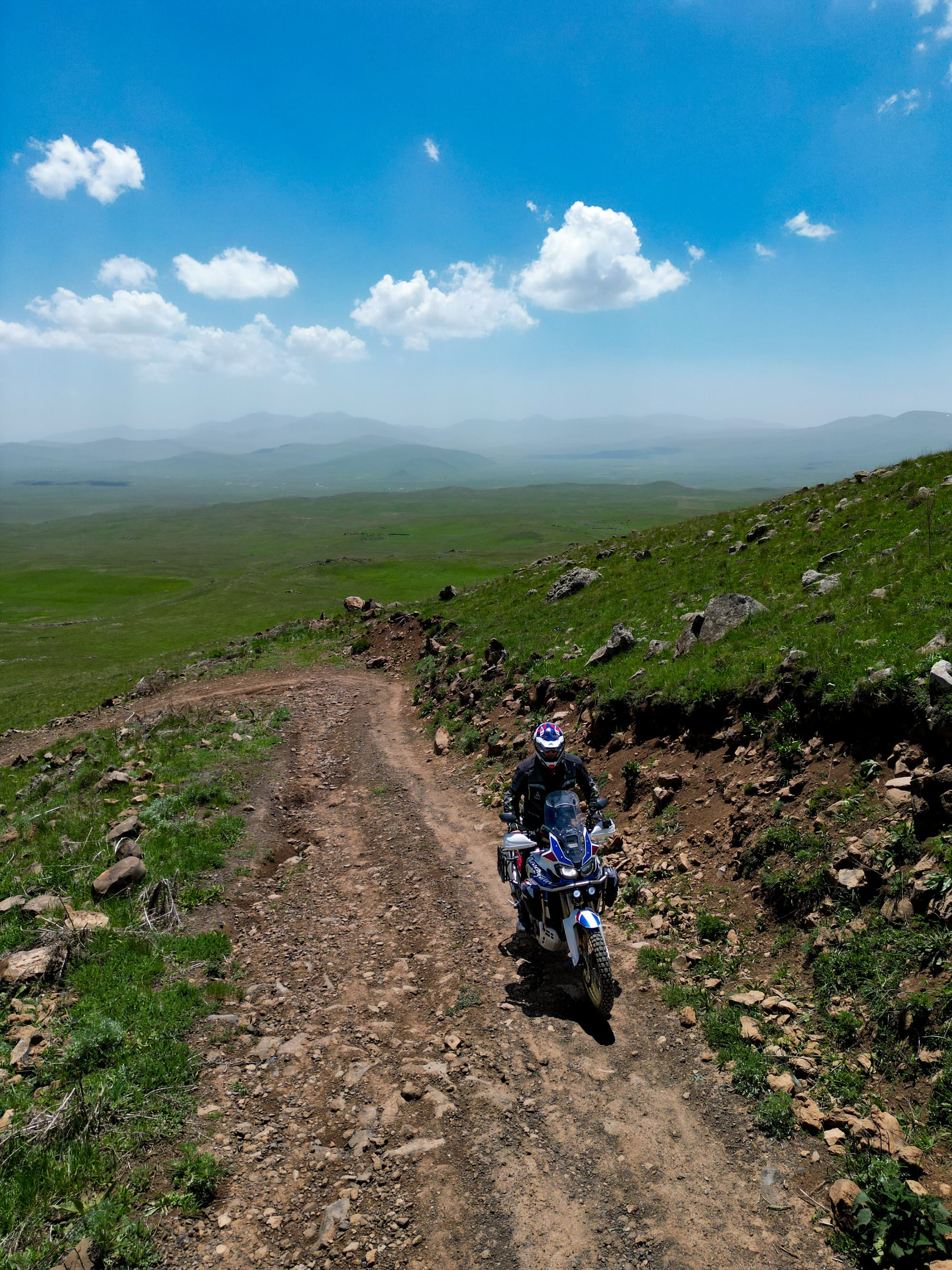
We continued south—this time together—toward Syunik. The landscape grew more severe, more beautiful. Craggy mountains framed the horizon, and the roads climbed in elevation. Late afternoon found us winding up a pine-lined road until, like something out of a dream, Harsnadzor Resort appeared.
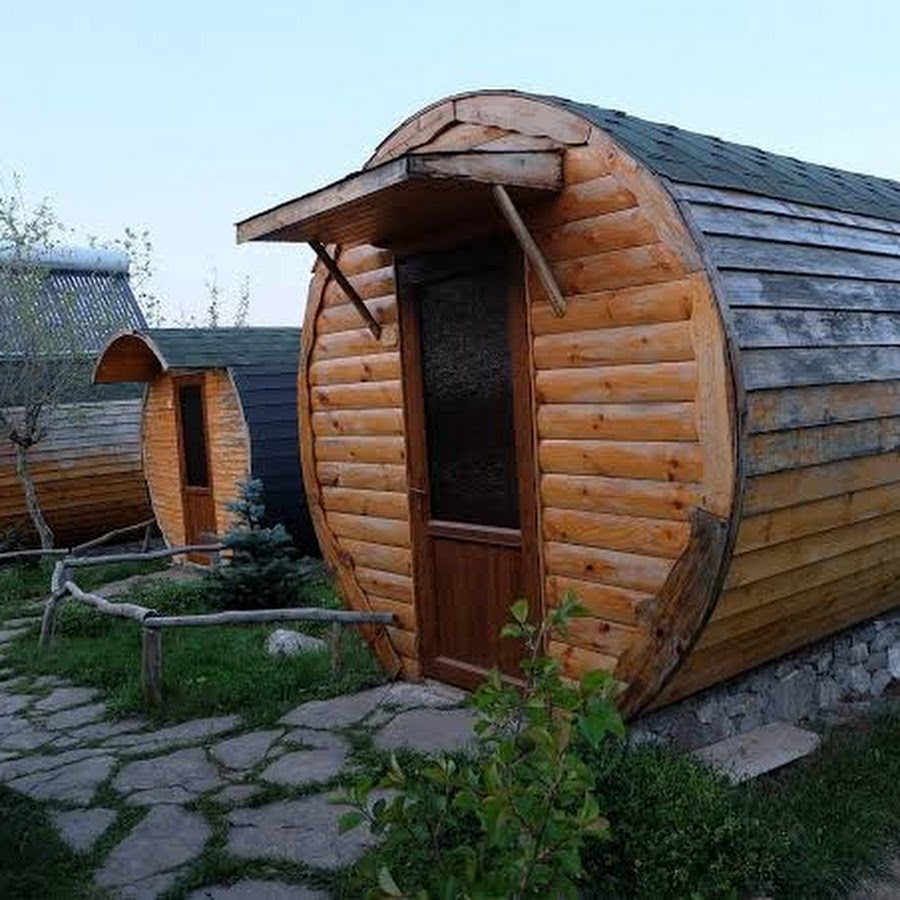
Harsnadzor Resort on Google Maps
Built dramatically on the edge of a cliff, the resort comprises wooden chalets perched high above the Vorotan Gorge, each with wide balconies and panoramic views that made your heart stop. The air was cool and fragrant with mountain herbs. Andra and I parked the bike at our chalet and just stood there for a while, helmets in hand, watching the sun begin to dip below the canyon rim. The girls from the team ran into the villa to check it out, and 2 of them came out with wet eyes in amazement at the views.
The chalets were simple but charming—wood interiors, simple lighting, and huge windows that pulled the outside in. We gathered later with the team on the garden terrace for dinner, drinks in hand, watching the cliffs turn orange, then purple, then black, so all we could do was feast on the lavish meal and savour the excellent wine. We ended the night with a bottle of wine and a round of truth-telling about what each person appreciated about their colleagues. An insightful exercise whereby people got to hear what they were most valued for by their peers.
Day 17 – Tatevi Mets, Khndzoresk, Monastic Morning, Cliffside Villages, and the Swinging Bridge of Khndzoresk
Waking at the Harsnadzor Resort, the Vorotan Gorge bathed in a fantastic sunrise. Before setting off for the day's main adventure, we took a short ride east of the hotel to visit one of Syunik's quiet treasures: Tatevi Mets Anapat (also called the Great Hermitage of Tatev). The road to the hermitage was rough and narrow—a half-forgotten lane flanked by forest and steep drops, too much to complete it by motorbike, so we hiked the rest of the way. Hidden in a fold of the forested gorge, Tatevi Mets Anapat appears like a secret revealed. Built in the 17th century, the monastery sits in serene isolation, its faded stone buildings covered in greenery and moss, nestled under a canopy of trees. The ruins are magnificent—crumbling walls, overgrown khachkars, and the echo of monastic life long gone. We wandered among them, humbled by the stillness and took the chance for a much-needed nap within the compound. After that we aimed toward the Khndzoresk region, further southeast. The landscape turned wilder—rockier ridges, deeper gorges, and stretches of high plateau.

By late afternoon, we arrived at the cliff's edge, where the Khndzoresk Swinging Bridge stretched out before us like a dare, which 5 of the group took!

The 160-meter suspension bridge sways gently in the wind, strung high over the gorge that once housed the Old Khndzoresk cave village—a network of stone homes, churches, and tunnels carved into the rock itself. The girls and Chris crossed the bridge one by one and posed for drone photos mid-way. On the far side, a winding path leads down into the stone village where the group explored its cave homes while Traian and I relaxed in a nearby cafe. The old stone church still stands, weather-worn, surrounded by mossy khachkars and whispering trees. The climb back up is slow, but the views make it worth the effort. As evening settled on Harsnadzor, we gathered again at the chalet, refreshed, then headed out to eat like royals at the amazing Bio restaurant, Tavern Hndzan, before retiring for the night.

Tavern Hndzan on Facebook
Day 18 – From Clifftops to Caves: The Long Ride to Yerevan
Leaving the cliffside calm of Harsnadzor Resort, we traced the mountain road north through deep canyons and high passes, where switchbacks opened to dizzying views of the Vorotan Gorge. Our first stop was the thundering Shaki Waterfall, hidden in a basalt canyon near Sisian—a 20-meter cascade pouring out of the rock face, icy and loud, reached via a short walk down a rugged trail. Just outside town, we wandered among the Noratus khachkars, Armenia's "stonehenge of cross-stones," where hundreds of ornately carved medieval steles stood quietly in rows, weathered and beautiful against the grass. Further on, we explored the legendary Areni-1 Cave, where ancient wine-making vats and even the world's oldest leather shoe were unearthed—its dim, cool interior heavy with the scent of history. The road beyond wound through the Arpa River canyon, a ribbon of cliff-hugging tarmac flanked by red rock walls and vineyards, before flattening out near Yerevan. We rolled into the city late, road-weary and sun-drenched, finally pulling into the quiet courtyard of the Roma Hotel, where soft beds and city lights waited.
Day 19 – Yerevan to Sofia for the team, and Tblisi for me - Departures, Delays, and a Dash to Tbilisi
While the team spent their final day wandering the tree-lined boulevards and café corners of Yerevan, soaking in the capital's laid-back charm and returning—without shame—to the same beloved restaurant for both lunch and dinner, the mood was bittersweet. Their 11 p.m. flight was meant to whisk them back to Bulgaria, but as fate would have it, the plane sat idle on the tarmac for five long hours, turning a nighttime departure into a dawn escape. By the time they landed in Sofia, the sun was up and breakfast was being served at the airport hotel—not that anyone had time to sleep. With weary eyes and stiff limbs, they split into cars and made the long drive back to Bucharest and Brașov, closing the loop on a journey full of mountains, monasteries, and more khachkars than anyone could count.
Meanwhile, I had my own unfinished business. I headed back to the Honda dealer in Yerevan, where a fresh set of tyres was fitted, and a sneaky ripped rear wheel bearing oil seal was discovered and patched up just in time. With the Africa Twin purring once more, I set off solo toward Georgia, the road unfolding like a promise. The ride was unreal—empty highways, golden light, and distant peaks—one of those rare days where every corner clicks and the hours disappear. I reached Tbilisi by 9 p.m., just in time for a quick shower and a nighttime motorbike tour of the city's iconic Kartlis Deda ("Mother of Georgia") statue, glowing over the capital with sword and wine in hand. The cobbled streets of the old town buzzed with life, so I wandered through the alleys of wine bars and open-air restaurants, soaking it all in before collapsing into bed, tired, satisfied, and ready for the next chapter.
Day 20 – Tbilisi to Tusheti, Into the Wild
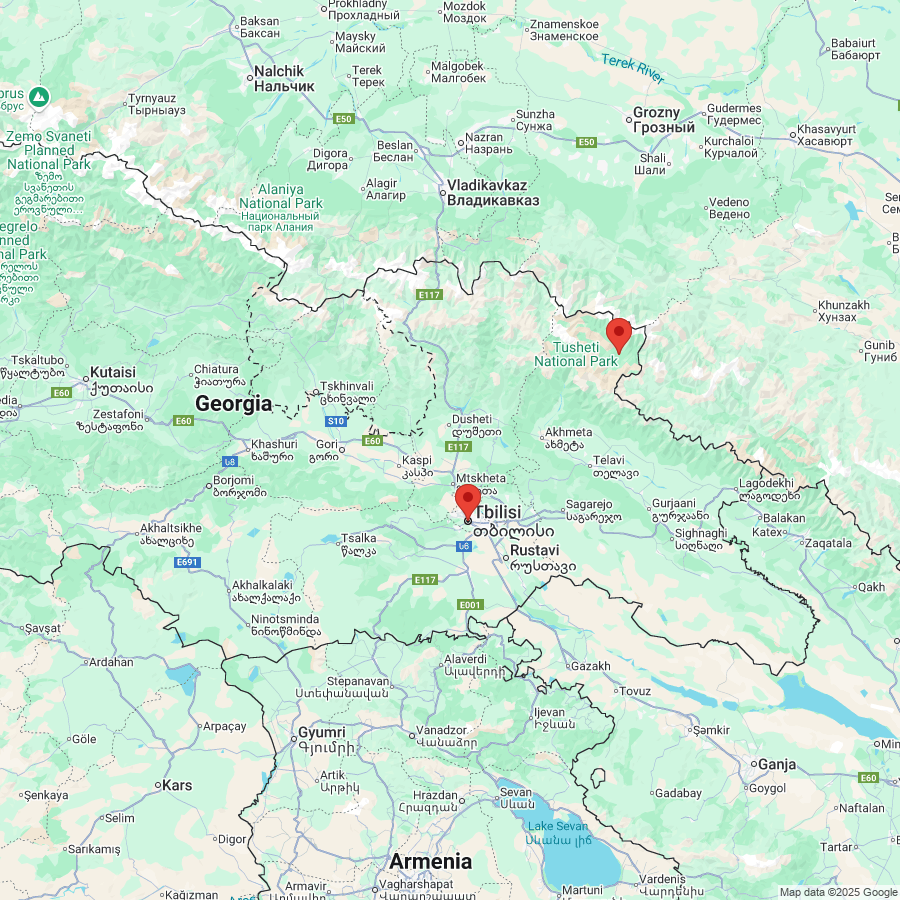
The Road to Omalo
I set off from Tbilisi just after sunrise, the Africa Twin humming through the already busy city streets as Georgia came to life. Heading east, the road opened into rolling hills and sun-warmed vineyards. I passed Kachreti, then wound my way into the cobbled charm of Sighnaghi, a hilltop town with terracotta rooftops and wide views over the Alazani Valley—Georgia's wine country at its finest. I stopped for half an hour to help a minibus driver repair a flat tyre, the second of my trip so far. But I wasn't here to sip wine. My eyes were on something far more remote, wild, and infamous: the road to Omalo, deep in the Tusheti region, bordering Dagestan.
I reached the start of the track around 4 p.m., blissfully unaware of what lay ahead—or that this 75km route would demand a minimum of four hours, even in decent weather. It didn't take long, less than 5 minutes for the asphalt to vanish beneath me, replaced by a brutal medley of stone roads, mud, loose gravel, jagged rocks, and snow-crusted sections, all stitched together by bone-shaking ruts and water crossings that sliced straight across the track. At times, I was riding through 50 cm deep flowing streams, dodging fallen rocks and even boulders, and inching along ledges where the drop was too far down to think about. The Africa Twin, weighed with luggage, clawed its way upward, unfazed. After maybe 3 hours, 2 French travellers on hired bikes flew past me, unburdened by luggage, so I chased them to stay with able-bodied people should I need their help in case I dropped my bike. It was a challenge to keep up with these 2 daredevils, who, it turned out, regularly ride off-road in Italy, Switzerland and France on its many alpine roads of this kind, so they had plenty of experience.

The road climbed steeply to the Abano Pass, which, at 2,850 meters, is one of the highest drivable mountain passes in Europe—and according to some, the most dangerous road on the continent, ranked #8 in the world. The videos below give you an idea of why it's also called 'Europe's Death Road'.
I began to understand why. Gravestones and memorial crosses stood quietly at the roadside, haunting reminders of those who didn't make it. The final 20–30 km were a blur of descending snow-lined switchbacks, the temperature dropping fast as dusk crept in.
With sore wrists and aching shoulders, I rolled into Omalo just 10 minutes before full darkness, the village lights flickering like a mirage at the end of a battle. I found a guesthouse tucked among the wooden houses, the air thin and cold, but alive with mountain silence. That night, huddled under heavy blankets, the wind howling outside, I knew I'd just crossed one of the wildest roads I'll ever ride—and somehow, it had been beautiful.
Day 21 – High Trails and Teeth
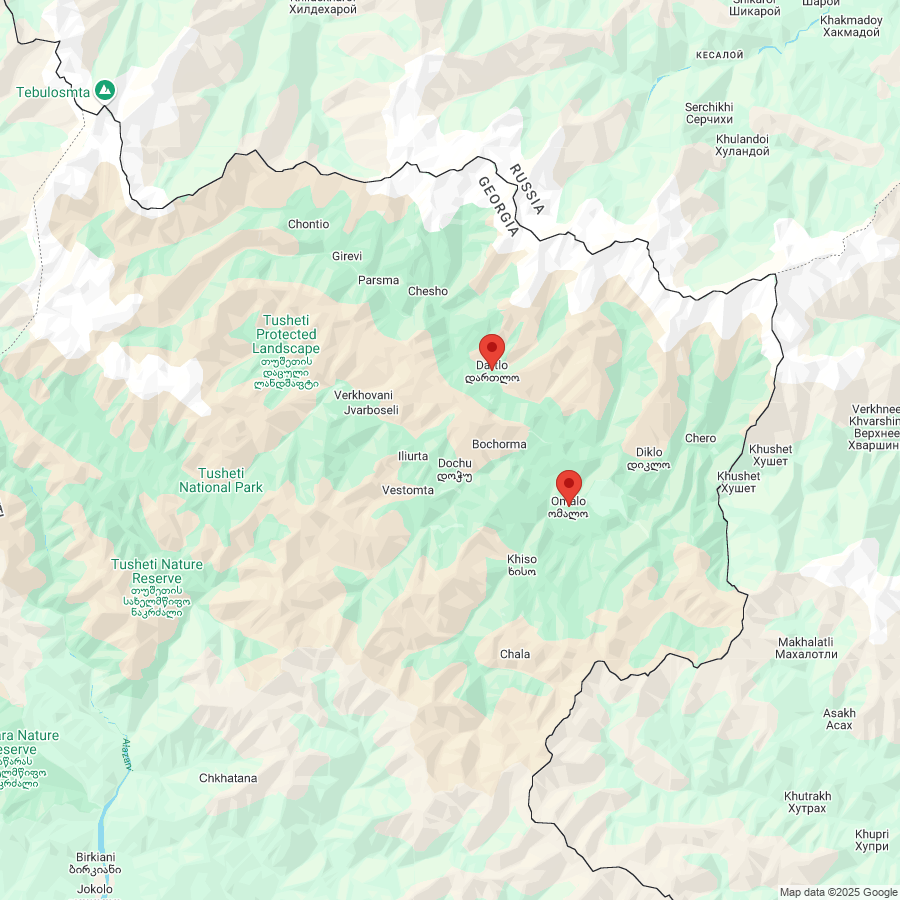
Shenako, Diklo, and Dartlo
With the bike finally unburdened of luggage, I set out from Omalo into the remote heart of Tusheti, aiming for the ancient villages of Shenako, Diklo, and Dartlo. The day's route would total around 80 km of tough off-road riding, a twisting thread of rock, loose gravel, and steep climbs, snaking through alpine meadows and across narrow ridgelines where one mistake could mean a long slide into the abyss.
The ride to Shenako was breathtaking—tiny stone towers, vast green valleys, and flocks of sheep scattered like moving clouds across the hillsides. But serenity quickly gave way to adrenaline when I was chased twice by massive, territorial sheepdogs. On a smooth road, I could've throttled away, but here? The track was rocky, steep, uneven, and unpredictable, with deep ruts and loose stones that punished any sudden movement. This video shows you the area better than I can describe.
Past Shenako, the road narrowed further on the way to Diklo, the easternmost village of Georgia, perched just a stone's throw from the Dagestan border. From there, I doubled back and looped up toward Dartlo, perhaps the jewel of the region—its medieval stone towers and slate-roofed houses stacked along a steep green slope like a living museum.
Every turn brought something new: snow patches lingering in the shadows, wild horses galloping across ridges, and valleys so deep and quiet they felt sacred. By the time I rolled back into Omalo in the late afternoon, dust-covered and smiling, I felt like I'd touched the ancient soul of the Caucasus. A hard day, an unforgettable one—and not a single kilometre of it paved. A hearty meal, then early to bed!
Looking to buy property in Eastern Europe?
Day 22 – From Saddle to Summit: Horses
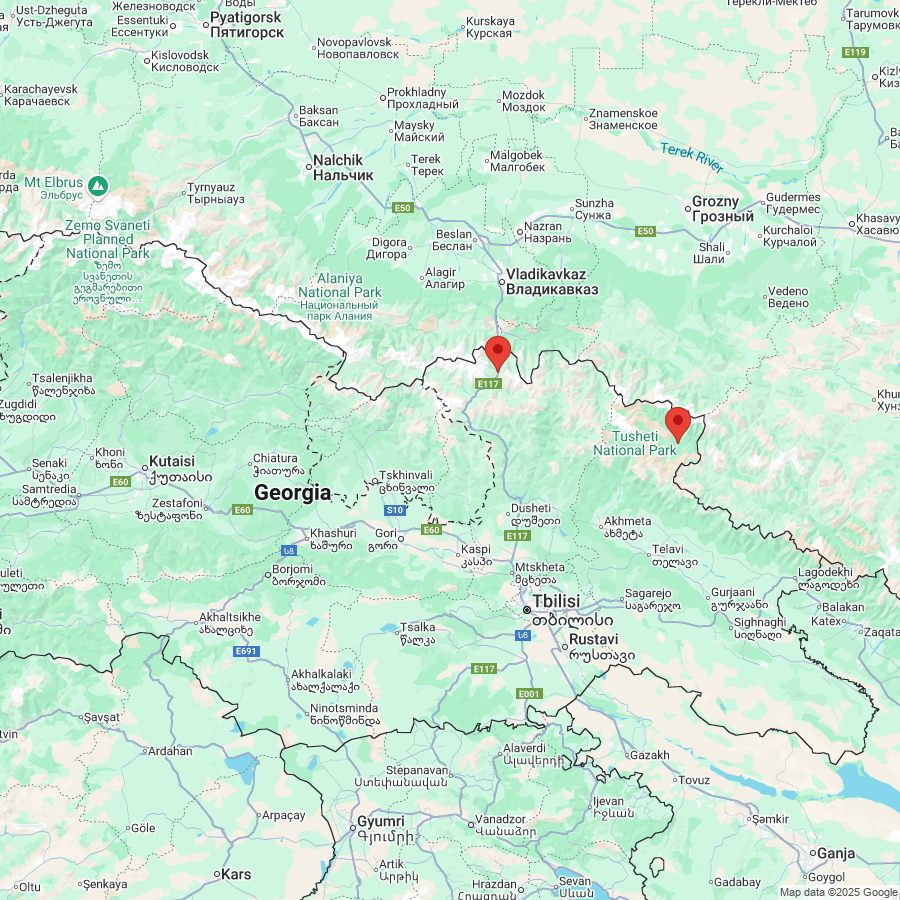
High Passes, and a Long Ride North
The day began slowly, the way mountain mornings should. With the bike resting after its off-road heroics, I traded horsepower for actual horse power, riding out from Omalo to Upper Omalo—a short, steep but peaceful journey through alpine pastures, wildflowers brushing my feet, and the sound of hooves soft against the mountain soil. The trail offered sweeping views over the ancient stone towers of Tusheti, and the calm rhythm of the ride was a welcome contrast to the chaos of the day before.

But by midday, it was time to face the Abano Pass once again—the infamous road back out of Tusheti, which somehow felt even rougher on the return. What had been snow and mud a few days ago was now sun-dried ruts, loose gravel, and the ever-present danger of a rockfall or unexpected stream carving a new path across the track. I took it slow and steady, the Africa Twin earning its stripes with every bone-rattling descent and blind corner. The gravestones on the way out still watched silently from the roadside.

Eventually, the trail spat me back onto smoother tarmac near Pshaveli, where the road north began to unwind through lush green valleys and narrow gorges toward Kazbegi National Park. The ride was long, hot, and glorious—climbing again into the Greater Caucasus, past the famous military highway, and finally arriving near Stepantsminda, close to the Gudauri ski resort, just before sunset. The peaks were dusted with snow, the air crisp and thin. It had been a day of two worlds—quiet horseback mornings and wild mountain roads, each offering their own kind of thrill. After a quick shower, it was back on the bike to explore Stepantsminda. In particular, the iconic 14th-century church atop the hill is the Gergeti Trinity Church, perched at approximately 2,170 m on Mount Gergeti's slopes, beneath the majestic Mount Kazbek. It's the only cross-cupola church in Georgia's Khevi region—complete with a separate bell tower and modest exterior, historically used to safeguard precious relics (including St. Nino's Cross) during invasions, From its elevated perch, the church offers breathtaking panoramic views across the valley, back toward Stepantsminda, and up to the glacier-topped Mount Kazbek—a truly unforgettable mountain shrine in Georgia's Caucasus. At this point, the wind was so strong that it blew my motorbike off its side stand. As I struggled to put it upright, a nearby tourist came running to help, commenting how he always adored Africa Twins. It was a shock for me to find out he had driven with his partner, Alexandra, all the way from Brasov, where I have an office. We ended up chatting and drinking until 1 am!
To be continued...









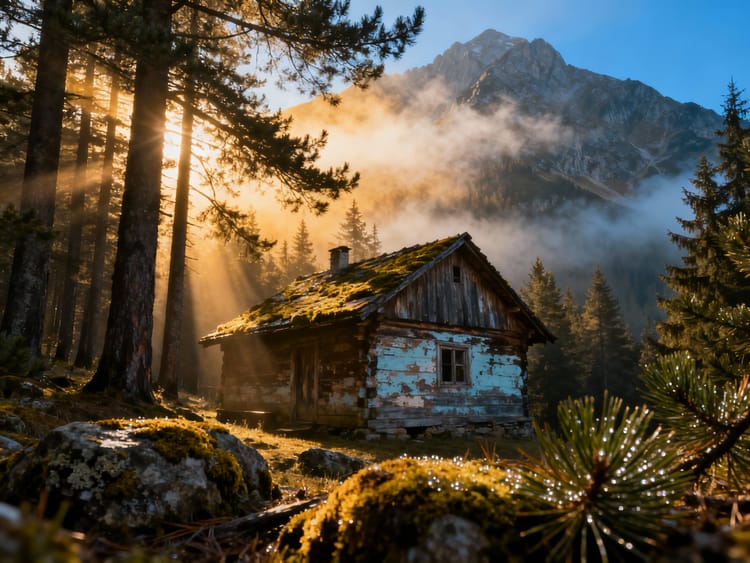

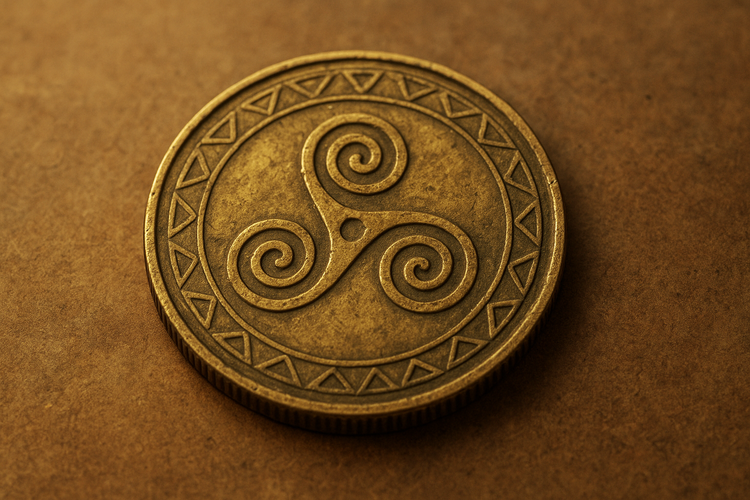
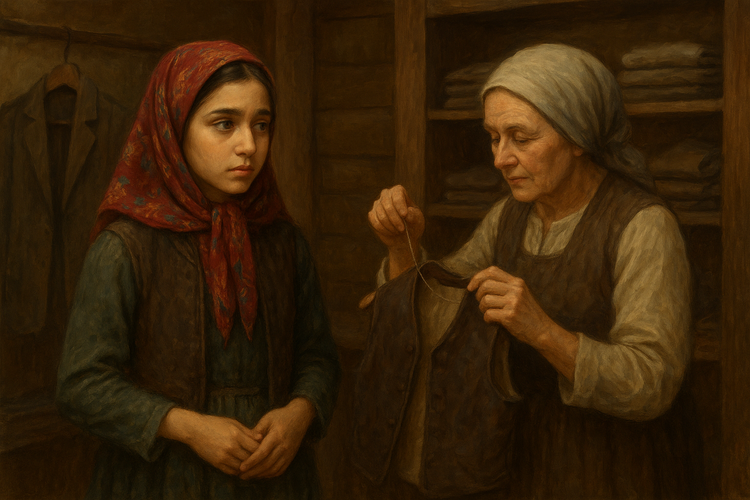
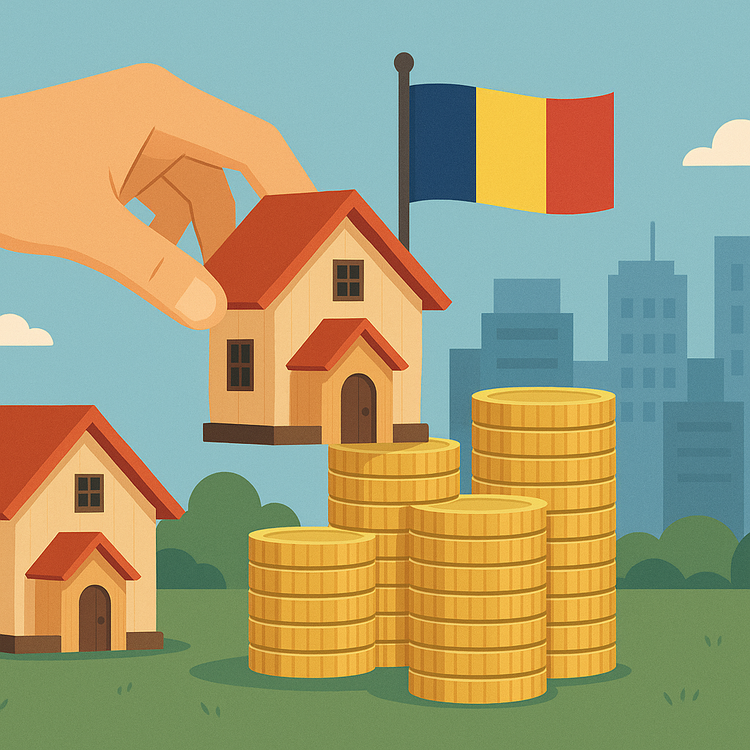
Member discussion